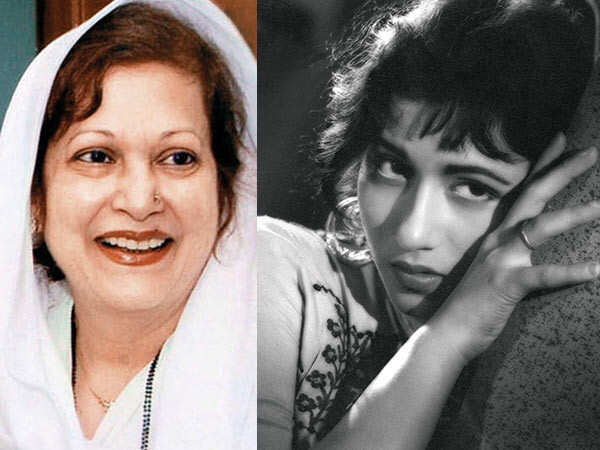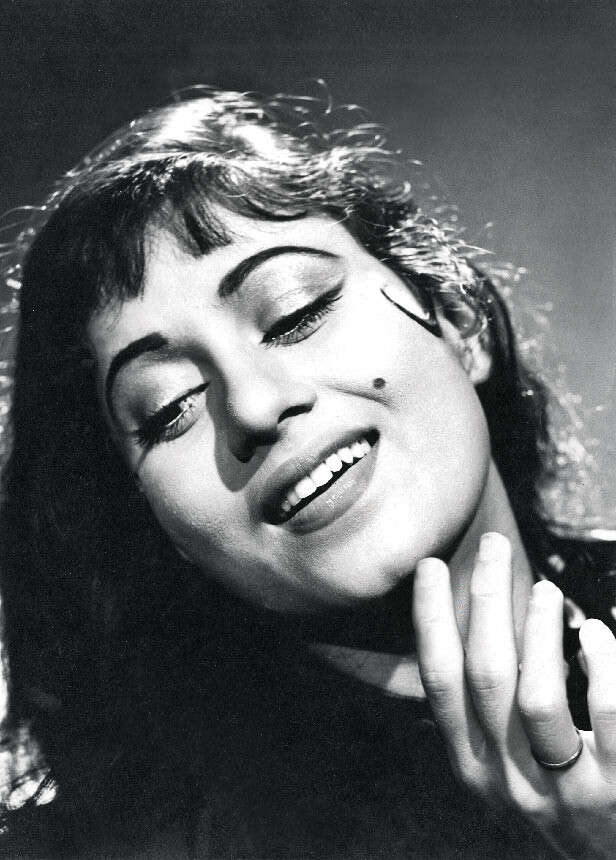
Too much in too little time. Beauty, fame, love and heartbreak… Madhubala had lavish doses of this in her ephemeral life. She seemed to be in a great hurry to play out her karmic trysts. Bestseller at the age of 16. Beloved at 18. Broken at 23. Bedridden at 27. Buried at 36. Yet five decades later, her photographs and memories ignite social media. Her beatific face continues to mesmerise generations. In a career span of two decades, she did around 75 films, most of them hits. But what continues to consume fans, biographers and cineastes is her life off the camera. Her doomed affair with superstar Dilip Kumar. The chimera of a marriage with Kishore Kumar. The excruciating illness. The desertion of her celestial looks and dreams… Her extreme rise and fall are compared to that of her Hollywood counterpart – Marilyn Monroe. Their heads thrown back in similar abandon, their full smiles concealing their hollow hearts. Once featured in the Life Magazine, as ‘the biggest star’ in the world… an ailing and anguished Madhubala had died in spirit years before she was buried. Such a story as hers deserves to be told believes sister Madhur Bhushan. Disappointed that the biopic on Madhubala by Imtiaz Ali was stalled due to familial opposition, Madhur isn’t yet willing to give up on the celluloid dream… In her words...
My parents (Ataullah Khan and Ayesha Begum) had 11 children - seven girls and four boys. I’m the youngest. Madhu Apa (Madhubala) was the fifth child. In the ’40s, Abba lost his job in the Imperial Tobacco Company in Delhi and came to Mumbai. My parents saw extreme poverty. Also, not one of my brothers survived. There was no money even for their kafan (shroud). Abba used to take Apa (Madhubala) from studio to studio in search of work. She was nine when she first appeared in Basant (1942 as Baby Mumtaz). Her first lead role, at 14, was in Kidar Sharma’s Neel Kamal (1947). Kamal Amrohi signed her for Mahal (1949) when she was only 15. After Mahal, there was no looking back. Hits like Dulari, Tarana, Amar, Mr. & Mrs. ‘55, Barsaat Ki Raat… established her as a star. I was born in a chawl in Kandivali when Apa was around 16. But my parents believed I was lucky, because Apa became a top heroine after that. There’s a reason why Abba was strict. A journalist once wrote that we were not Ataullah Khan’s daughters. That he had brought us girls to Mumbai to earn money out of us. My father took him to court. Since then, Abba didn’t allow journalists on the sets or at home. He hung a board on the sets saying, ‘Journalists not allowed’. Apa wasn’t allowed to attend any parties. People called him Hitler. Apa has been defamed saying she had many love affairs. Who would not be enamoured by such a beautiful woman? She was like marble. Like many others, Pradeep Kumar and Bharat Bhushan were also infatuated with her. Premnath was in love with her. But at that point Apa feared an inter-religious marriage would not be approved by the family.

The romance
Dilip Kumar and Apa first met on the set of Jwar Bhata (1944). Their relationship began during Tarana (1951). They went on to pair in Sangdil (1952) and Amar (1954). They were engaged to be married. But the Naya Daur court case in 1956 changed it all (Ataullah Khan didn’t want Madhubala to shoot outdoors. Dilip Kumar testified against Khan in favour of director BR Chopra). Apa asked Dilip saab to apologise to Abba. She was a devoted daughter and didn’t want her father to be disrespected. But Dilip saab refused to say sorry.
I wonder why he became so hard on her when he loved her so much? Abba told Apa, “He will say sorry in a room. What about the thousands, who heard and read about what he said in court?”
Coming to Apa’s illness, it was first noticed when she spat blood during the shooting of SS Vasan’s Bahut Din Huwe (1954). Dilip saab had then flown in with Dr Rustom Jal Vakil from Mumbai. He diagnosed she had a hole in the heart (ventricular septal defect). Apa found it hard to believe. So did others. She was a well-built girl with a healthy pink complexion. She didn’t take it seriously. She kept on working. While shooting in chains as Anarkali in Mughal-E-Azam (1960, K Asif’s film took 16 years to complete), she fainted several times on the set. Dilip saab and Apa were not even on talking terms whilst shooting some portions. The thappad scene, the iconic feather scene… were shot after their break-up… In the feather scene, she looks so much in love with him. They were made for each other. Apa never played the songs of Mughal-E-Azam as they made her emotional. Though they were estranged, she could never forget Dilip saab.

Kishore Bhaiyya and Apa got to know each other while doing Dhake Ki Malmal (1956) Chalti Ka Naam Gadi (1958) and Mehlon Ke Khwab (1960). Kishore Bhaiyya loved her a lot at one point of time. When he showed an interest in her, at first, she didn’t react. When he told her, ‘I want to marry you,’ she didn’t respond. She wouldn’t take his calls. She wouldn’t meet him and would shut the door when he came to meet her. He’d say things like, ‘I will die. I’ll take poison. I’ll put my hand in the fan…’ I don’t know how he convinced her finally. Perhaps, she married him to forget the sorrow of losing Dilip saab. They had a registered marriage (1960). She draped a white saree. She was impressed by Nargisji and like her only dressed in white. She liked light jewellery. She hardly ever wore bangles.
After that they flew to London with Dr SV Golwala to consult a specialist. The doctor there point blank told her that she had just two years to live and no medicine could be prescribed for her (sadly the cure was found within one and a half year of her death). After sometime, Kishore Bhaiyya insisted she stay with my parents. He said he wouldn’t be able to look after her as he’d be out for recordings, shows and shootings. She asked him to keep a nurse. He said how can I leave you behind alone? She couldn’t work as an actor. They couldn’t have a man-woman relationship nor could she give him the happiness of a child. But she wanted to be with him.
She returned to us devastated. But she never gave up. “Aap dekhiye Abbaji… main kahan beemaar hoon? Main koi do saal mein marne wali nahin hoon. Doctors will invent a cure. I’ll rest for a few months and be back on the sets,” she’d say. She did go on the sets to complete some films but couldn’t shoot. She fainted. Initially, Kishore Bhaiyya came every evening and sat for around two hours. He’d take her for a drive. But she’d get tired and they’d soon return home. Gradually, his visits lessened. At times, she’d get possessive and say, ‘You’re shooting with so many heroines. Why don’t you take me along? I’m your wife. Give me some rights too’. During the last three-four years he hardly came. He’d say, ‘I get disturbed seeing you. I can’t get you off my mind then’.

She’d spend her time reading Urdu poetry. She loved the shairi of Mirza Ghalib and Daagh Dehlvi. Her favourite song was Rulake gaya sapna mera (Jewel Thief), which summed her life. Gradually, she began losing too much weight. She became a skeleton. Her beauty paled. She didn’t want to meet anyone. She was like a caged bird. Blood would ooze from her nose and mouth. She was given the oxygen cylinder whenever she felt breathless. But she never took any help from us. Till the last, she’d bathe by herself. She would peform the fajr (morning) namaz regularly. The other times, she’d pray lying down.
She was worried for our parents. She had bought a property in Pali Hill, which my father, in time of need, sold to actress Sadhna. That property proved to be unlucky for Sadhna too. She developed an eye problem after that. Often, Apa would cry saying, ‘I want to live, I don’t want to die’. She lived for nine years when she was given two. Such was her desire to live. Once when she was hospitalised in Breach Candy, Apa sent for Dilip saab. He did come. ‘Tum acchi ho jaaogi Madhu. Tum kyon depressed ho? Hum wapas karenge kaam,’ he said. She asked him, ‘Tum mujhe yaad karte ho ya nahin?’ He replied, ‘Agar yaad nahin karta toh kaise aata tumhare bulane par.’ He sat for an hour. He was not married to Sairaji then.

A sad end
When Apa was in her last days, I’d developed chicken pox. So I was staying away from her. But I rushed to her room the day her health began deteriorating and she was bleeding profusely. Abba called Kishore Bhaiyya. He was flying for a show. Abba said, “Cancel the flight Kishore! She won’t last.” He came. She was sinking, unconscious, eyes closed… She passed away on February 23, 1969 at 9.30 am. It was a miserable death. She died as Mrs Kishore Kumar Ganguly.
Dilip saab was in Madras shooting for a film. When he heard that Apa was critical, he flew down immediately. But by the time he landed, she was buried. He then went to the kabrastan to pay his last respects. Food was sent from his house to ours for three days. My father would visit her grave and cry every day. He suffered a series of heart attacks. He passed away six years after Apa in 1975. My mother developed tuberculosis but carried on for 18 years. Recently, my Guruji, Arvindji (Kumar Malviya) visited the cemetery in Juhu and asked for Madhu Apa’s grave. Pointing to her grave, the caretaker said, “Every week someone or the other comes to place flowers on it.”
The biopic on Apa with Imtiaz Ali, a fine filmmaker and human being, couldn’t be made. My sisters (Altaf 91, Zaibunissa 87 and Kaneez 93) didn’t want it to happen. The film wouldn’t have maligned anyone. If I humiliate my elders, I’d be humiliating myself. My Guruji, who lives in Jodhpur, offered me a place to build a home for the old. It was Apa’s wish to start such a home and a school for girls. I was only planning to fulfill Apa’s dreams.Maybe, someday I will…


SHOW COMMENTS